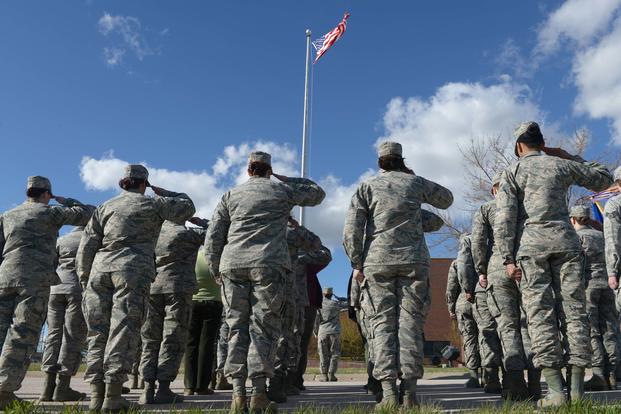The sixth woman to attempt the U.S. Air Force's battlefield airman training program has self-eliminated, the service said Thursday.
The airman, whose identity has not been made public due to privacy concerns, began her first block of Tactical Air Control Party apprentice training March 12, but did not finish.
"The sixth woman who entered the pipeline self-eliminated and is no longer in the pipeline. There are currently no females in TACP training," Air Education and Training Command spokeswoman 1st Lt. Geneva Croxton told Military.com.
Two female airmen who began battlefield training in August also attempted to become TACP specialists, but did not succeed, officials said.
Related content:
- Sixth Female Airman Attempts TACP Training, Air Force Says
- SpecOps, CSAR Alignment Right if it Makes Force More Lethal: General
- Air Force Secretary: 'Our Doors Have to Be Open to All'
Separately, another TACP trainee removed herself from training due to a leg injury in 2016; a combat rescue officer candidate passed the physical test but never completed the selection program application; and another non-prior service TACP candidate couldn't meet entry standards following Basic Military Training at Lackland Air Force Base, Texas.
"The principle here is that … every career field [is open to women]," AETC commander Lt. Gen. Steven Kwast said during a breakfast Thursday with reporters in Washington, D.C.
Before it was made known that no women are currently in the pipeline, Kwast spoke generally about the training program.
"Our effort [is] to make sure we're treating everybody like they're world-class athletes, where we're proactively using physical therapy and training techniques that are uniquely fit for the human being that's in the program to make them healthy," he said.
The new training concepts differ from "the industrial-age model of putting a rucksack on their back; you put them in combat boots and you make them run five miles. Those are the days of old," Kwast said.
He continued, "We make sure that every woman who is coming into the battlefield airman [pipeline] has a coach, and those coaches are designing the training uniquely for them, to make them healthier, faster, better, stronger and smarter all the way along."
Similar physical training and therapy elements exist in the Air Force Special Operations Command community, where some battlefield airmen would go after their combat training is complete.
The new training techniques are not just for women but for any airman attempting some of the toughest career fields in the U.S. military, Kwast said.
The tailored physical training looks at all of the characteristics of an individual attempting the courses, which average roughly two years to complete. For example, if someone is tall, the coaches will create unique exercises and muscle development training so he or she doesn't develop a detrimental lower back condition later on, he said.
Kwast said the command has seen results in that "the washout rate is going way down, but the competency and the level of performance is going up."
Last year, Lt. Gen. Darryl Roberson, then-head of AETC, noted the community has some of the highest washout rates in the Air Force due to the grueling nature of its work.
At any given time, the service is training 1,000 to 1,500 airmen for battlefield career fields. On average, only 20 percent of those graduate.
Battlefield airmen -- special tactics officer (13CX), combat rescue officer (13DX), combat controller (1C2XX), pararescue (1T2XX), special operations weather (1WOX2), TACP (1C4XX) and air liaison officer (13LX) -- "have the highest attrition rate of any specialty in the U.S. Air Force," Roberson said in September at the Air Force Association's annual Air, Space and Cyber conference.
Through its Battlefield Airmen Recruiting Squadron, the Air Force hopes to better pinpoint individuals ready for the task.
"We still have to work harder at the recruiting piece, where we are inspiring a broader swath of society to come into this because we align their passion, their propensity and their skills and talents with our requirements," Kwast said.
Part of that requirement is fostering diversity, so the Air Force "looks like the demographics of America," he said.
-- Oriana Pawlyk can be reached at oriana.pawlyk@military.com. Follow her on Twitter at @Oriana0214.












